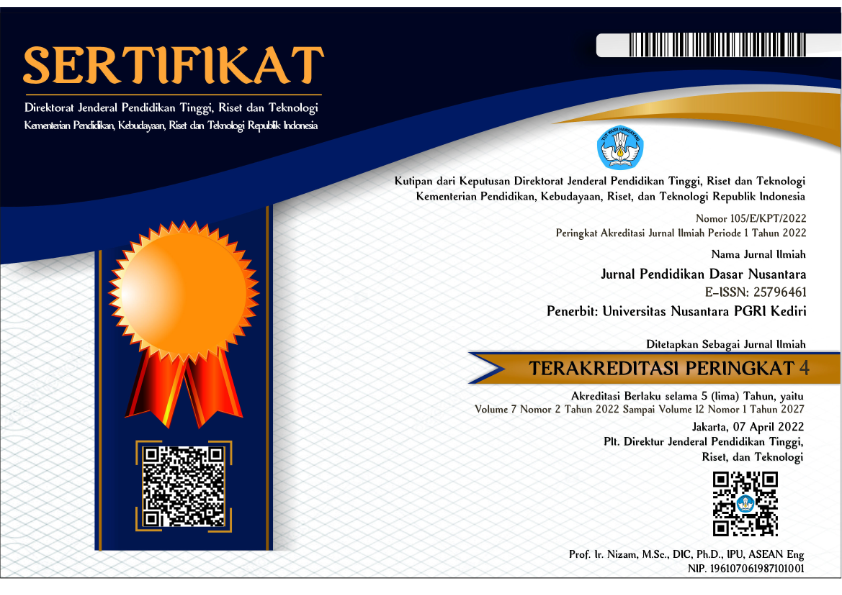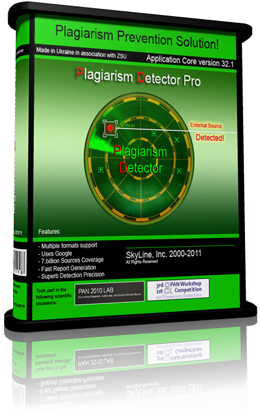Pengembangan Media Pembelajaran Tas Pintar Pada Konsep Dasar Perkalian di SDN 1 Papayan
DOI:
https://doi.org/10.29407/jpdn.v6i1.14286Keywords:
Media Pembelajaran, Media Pembelajaran Tas Pintar, Konsep Dasar PerkalianAbstract
This study aims to develop and produce smart learning media products on the basic concept of multiplication at SDN 1 Papayan. This research development uses the Research and Development (R&D) stages that adapt the 4D model. Data analysis techniques used in this study are qualitative and quantitative data analysis techniques. The technique of collecting data in this study used a questionnaire and preliminary tests. The results showed three steps, namely Determining, Designing, and Developing. Based on the product evaluation by the material expert obtained a score of 4.9 in the excellent category. Assessment of the product by media experts scored 5 in the excellent category. Results The product assessment by the teacher scored 5 in the very good category. Scores by 3 students in limited trials obtained an average score of 5 in the excellent category. Product scores by 25 students in the field trials obtained an average score of 4.83 in the excellent category. Overall based on learning outcomes learning media obtained a score of 4.89 in the category of very good smart learning media worthy of being used in the basic concept material multiplication. Results on the initial test before using learning media get an average score of 7.320 increased after learning the basic concepts of multiplication using smart bag learning media on the final test getting a score of 9.120. The results of this study are in accordance with the expectations that students have been able to understand the basic concepts of multiplication as a repetitive addition, so that the smart bag learning media is effective for use in the basic concepts of multiplication
Downloads
References
Arsyad, Azhar. 2015. Media Pembelajaran. Jakarta: Raja Grafindo Persada
Badru, dkk. 2007. Media Pembelajaran. Bandung: UPI PRESS
Fatmatur, dkk. 2017. Desain pembeljaran inovatif dari teori ke praktik. Jakarta: Rajawali Pers.
Herman, dkk. 2007. Pendidikan Matematika 1. Bandung: UPI PRESS
Kustandi, Cecep, dkk. 2011. Media Pembelajaran Manual dan Digital. Bogor: Ghalia Indonesia
Maolani, Ilam. 2017. Strategi Pembelajaran. Yogyakarta: Leutikaprio
Sukiman. 2012. Pengembangan Media Pembeljaran. Yogyakarta: Pedagogia
Sukmadinata, Nana S. 2010. Pengembangan Kurikulum:Teori dan Praktik. Bandung: Remaja Rosdakarya
Sundayana, Rostina. 2016. Media dan Alat Peraga Dalam Pembelajaran Matematika. Bandung: Alfabeta
Trianto. 2010. Model Pembelajaran Terpadu. Jakarta: Bumi Aksara
Widoyoko, Eko P. 2012. Teknik Penyusunan Instrumen Penelitian. Yogyakarta: Pustaka Pelajar
Zubaidah dan Risnawati. 2016. Psikologi Pembelajaran Matematika. Yogyakarta: PT Plosokuning
Downloads
Published
Issue
Section
License
Authors who publish with this journal agree to the following terms:
- Copyright on any article is retained by the author(s).
- The author grants the journal, the right of first publication with the work simultaneously licensed under a Creative Commons Attribution License that allows others to share the work with an acknowledgment of the work’s authorship and initial publication in this journal.
- Authors are able to enter into separate, additional contractual arrangements for the non-exclusive distribution of the journal’s published version of the work (e.g., post it to an institutional repository or publish it in a book), with an acknowledgment of its initial publication in this journal.
- Authors are permitted and encouraged to post their work online (e.g., in institutional repositories or on their website) prior to and during the submission process, as it can lead to productive exchanges, as well as earlier and greater citation of published work.
- The article and any associated published material is distributed under the Creative Commons Attribution-ShareAlike 4.0 International License

































